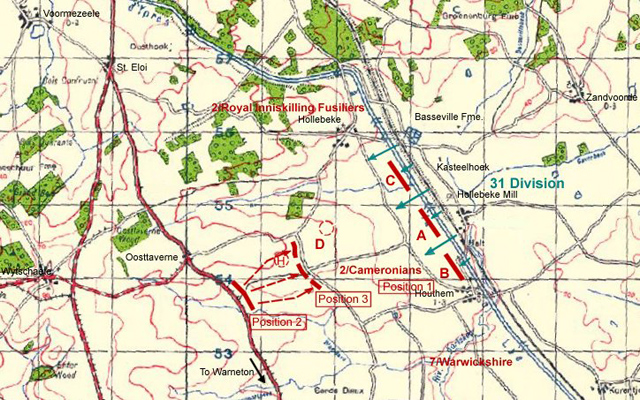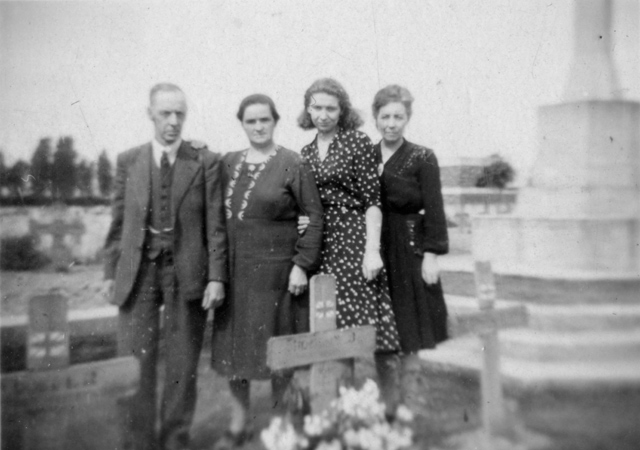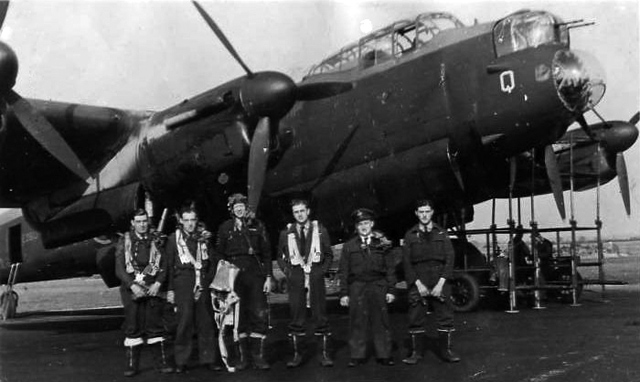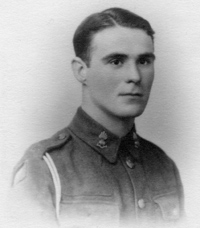
Not long after being demobilised from the army following the end of the First World War, 28-year-old Tom Thompson married Agnes Cockbain Hetherington at Christ Church, Accrington. Neither was a native of the town, Tom having been born in Nelson, Agnes in Whitehaven. Tom had voluntarily enlisted in the army in September 1914 and went out to France in March 1915 as a private with the number 12669 to join 2nd Battalion, Cameronians (Scottish Rifles), earning the 1914-15 Star in addition to the British War Medal and Victory Medal. The couple's first child, Jack, was born at their home of 12 Wellington Street in Accrington on 15th February 1920. Three more children followed: Tom (born 14th March 1921), Walter (1923) and Edna (1926). The two eldest brothers both started their education at Woodnook Council School, Jack going on to Accrington Grammar School while Tom went to Hyndburn Park School. Their hobbies also diverged - Jack became a competitive runner with Clayton Harriers, making fun of his younger brother for 'wasting his spare time' playing billiards. At the outbreak of war in September 1939, the family home was at 13 Hudson Street in Accrington, Tom (senior) in employment as a textile machinist. Jack had already enlisted into the Territorial Army on 19th April 1939, and had been posted to 52nd (East Lancashire) Light Anti-Aircraft Regiment, Royal Artillery with the rank of gunner (1452087).1 March 1940 - five months into the 'phony war' - found Jack in France, serving with H Troop of the regiment's 156th Battery. In a letter he wrote on 16th March to his best pal, Norman Jackson, he complained of the boredom: 'Blue-pencil' browned off is the expression the fellows use here. Either peace wants to be made or else bang away and get the 'blue-pencil' war over with.2Yet at the same time he had been switched from the anti-aircraft batteries to a Bren machine-gun carrier attached to troop headquarters; although he welcomed the move at the time, it may have sealed his fate two months later.
The following day, 27th May, opened with heavy enemy mortar and artillery fire, followed by attacks by the German 31st Infantry Division in which 'A' and 'C' companies of the Cameronians sustained heavy casualties. Two platoons of 'D' Company supported by Bren carriers were brought forward to stabilise the battalion's left flank after 'C' Company had been forced to pull back. The Cameronians held their positions under sustained pressure until receiving an order at about 4pm to withdraw some 900m to higher ground.3 The withdrawal, made under intense shelling and mortar fire, went further than intended. Lieutenant-Colonel George Gilmore D.S.O., M.C.4, in command of the Cameronians, collected 10 officers, about 180 men and 5 Bren carriers on the Warneton-Ypres road (Position 2 on the map) from where he led a counter-attack to regain the higher ground. The attack was met with a murderous belt of machine-gun fire across which the paths of tracer and incendiary bullets were terrifingly evident. Gilmore would later write that "...all would have died in the attempt, had it not been for our carriers. They guarded our flanks and when the enemy tried to get us with enfilade fire they chased him away or ran him down..."5 The objective (Position 3 on the map) was gained but at a high cost. On the following day, the Cameronians withdrew under orders through the village of Wytschaete.  Operations of 2nd Bn., Cameronians on 27th May 1940, adapted from a sketch map drawn by Brigadier G. H. Gilmore, D.S.O., M.C. published in "The Covenanter" of January 1958, and superimposed on British War Office GSCS 4040 (1:50,000) map, 1943-44, courtesy of the National Library of Scotland. Twenty-one officers and men of 2nd Cameronians who lost their lives between 10th May and 4th June 1940 are known to be buried in Oosttaverne Wood Cemetery, 4km west of the Ypres-Comines canal. Among them is Jack Thompson, whose gravestone inscription states that he died between 15th and 31st May. It seems most likely that Jack was killed on 27th May and buried on the battlefield where his grave was discovered by two young Belgian women named Germaine and Marie-Louise.6 Seventeen months would pass before Jack was officially declared to have died in his country's service. In the meantime, his parents knew only that he was missing, and had been given hope when told of a photograph of prisoners-of-war in which a Jack Thompson was named.  Tom and Agnes Thompson at the grave of their eldest son, Jack, in Oosttaverne Wood Cemetery with Germaine and Marie-Louise. Date unknown. The two girls were described by Jack's brother, Walt, as "friends of Jack's...who found his grave." Within a month of learning that his elder brother was missing, Tom enlisted into the Royal Air Force on 2nd July 1940 at the age of nineteen. He underwent training at Blackpool, Sywell, Manston and Stormy Down (No. 7 Air Gunners School) before being posted on 20th April 1943 to No. 27 Operational Training Unit at Lichfield as Sergeant, (Rear) Air Gunner (1351019). At this stage, he most likely 'crewed up' with Michael McMahon (Pilot), John Brewster (Air Bomber), Allan MacDonald (Navigator) and Albert Fleming (Wireless Operator). After two months qualifying on Wellington medium bombers, the crew moved on to No. 1656 Operational Conversion Unit at Lindholme on 30th June 1943 to train on the heavier Lancaster bomber. The Lancaster crew of seven was made up by George Crawford (Mid Upper Air Gunner) and Robert Stocks (Flight Engineer). On 15th August 1943, the crew were posted to 103 Squadron at Elsham Wolds. They had completed twelve operations when they flew Lancaster JB730 for an attack on Berlin over the night of 23rd/24th December.7  Lancaster crew of F/S Michael McMahon R.A.A.F by kind courtesy of David Fell. JB730 failed to reach its target that night. At around 3am local time on 24th December, the Lancaster was brought down in flames some 30km north-east of Koblenz, and exploded as it hit the ground near the village of Obersayn. The aircraft is thought to have been the victim of a night-fighter pilot, Leutnant Erich Jung belonging to 6./Nachtjagdgeschwader 2. The remains of the seven crewmen were buried in a communal grave on the edge of a wood, 600m north of the village.8 The story is told that the crew was identified only by the name 'Thompson' on a dog-tag.9 The crewmen were later reburied in Rheinberg British Cemetery. The names of 175 Accrington men who lost their lives in the Second World War are recorded on the town's war memorial in Oak Hill Park. Among them are three sets of brothers, John & Richard Dickinson, John & Ronald Maden, and Jack & Tom Thompson.10 When you go home, tell them of us and say
© Andrew C Jackson 2019
|
